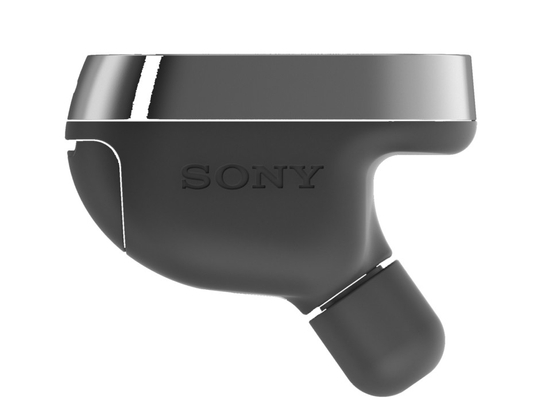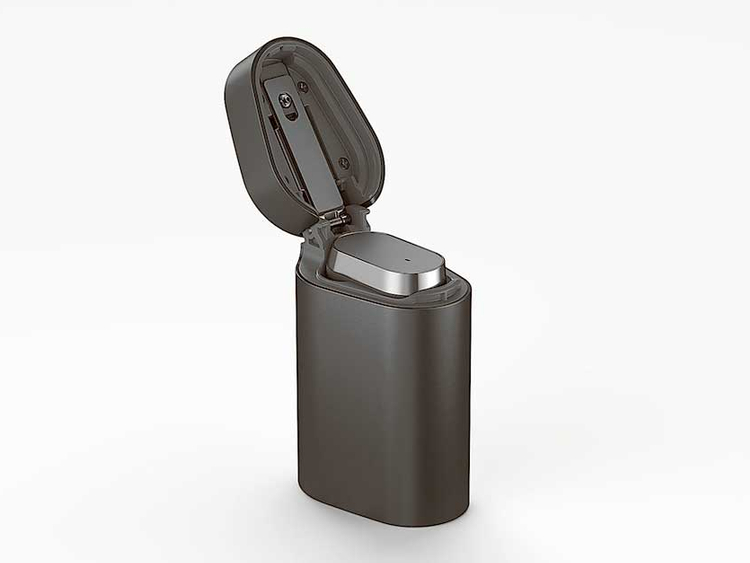
Dubai: Sony has incorporated its own artificial intelligence assistant into its earbud — Xperia Ear.
The mono device can be classed as an in-ear device and does not protrude much like a Bluetooth headset. The design is neat, small, light and shaped to follow the natural curves of the earlobe.
It measures 15.2 x 29.3 x 24.3mm and weighs just 6.8 grams. The cigarette lighter sized charging case weighs 39 grams and can be inserted into the pant pocket.
Sony has added different tips and wings (three sizes each) with the box. The device is spill proof.
The main surface of the device acts as a button with short and long press actions. A single press puts the device in listening mode while a long press can be programmed to perform a specific function, including downloading of a voice pack and the latest firmware.
The device is compatible with Android devices running 4.4 KitKat or higher.
The single multi-colour LED glows when the device is in the pairing mode or speaking to you and a green light when it is fully charged.
The app has to be downloaded from the Android app store and can also be paired either via Bluetooth 4.1 or NFC. The whole process takes around 25 minutes to finalise.
You can use Xperia Ear to make and answer calls, listen to the news, texts, create calendar events, search Wikipedia and set alarms or timers, calendar items, WhatsApps or emails, get directions via Google Maps and weather forecast from AccuWeather. Users can reply to the messages or head gestures to say yes or no.
The noise cancelling dual mics did a good job of picking up my voice but the volume is not very high, especially when you are in the room with loud music playing background.
The device relies on the phone and the Xperia Ear turns on automatically in your ear, but to give it a voice command you’ve to physically press it. With an integrated proximity sensor, gyroscope and accelerometer, it knows if it’s in your ear, not in use or in its charging case, and reacts accordingly.
There are always limitations with voice assistants at this stage but it will definitely get better. When you start navigating to a certain destination, it will display the directions on the phone. Navigation will not start until you take the phone out to confirm that in Google Maps.
The disadvantages are you cannot tell the device to turn the volume up or down or you cannot ask it to read the last message you received. The Ear can set alarms and timers by talking to it, but it cannot be cancelled or adjusted once set without using your smartphone.
There is always a pause for a couple of seconds after the issue of any command. The device plays a two-tone noise over and over when it is waiting for information from the internet.
The Ear can be used to play music but listeners cannot enjoy the songs through a single Bluetooth device. At the same time, you can buy two Xperia Ears to listen to the music, but the cost will go up.
The Ear will only appeal to a very small group of consumers with limited use, especially tech-loving early adopters.
The device gives around four hours of battery life and the case to charge the 300mAh battery gives around 16 hours on top of that. The battery life depends on the use and the battery drains faster to less than three hours when listening to YouTube videos. The complete charge of the headset takes only about 30 minutes which is pretty good. It is priced at Dh799.
Pros
Good audio quality
Decent battery life
Accurate gesture recognition
Quick to recharge from zero to full
Tight and secure fit
Cons
Bit expensive for a mono device
Sony’s Assistant needs improvement
Sometimes slow to respond
Limited Artifical Intelligence
Not compatible with iOS











